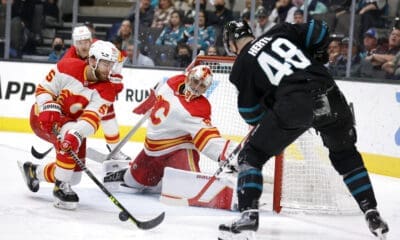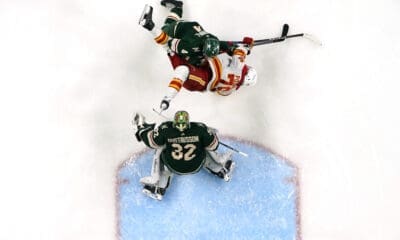Calgary Flames
Understanding Advanced Stats, Part Two: Scoring and On-Ice Shooting

Advanced stats are not perfect and are mostly useless as evaluators of talent (like pretty much any other stat) without context, and the bigger the sample size the more accurate a stat will become-ideally, for hockey, this means at least an 82 game season.
I understand some people might have issues when we bring up things like PDO, GVT, CorsiREL and other non-traditional ways of evaluation. In my opinion, these stats add to the game, and I don’t want someone to be lost when they read an article here because they don’t know what the hell Zone Start is or how it impacts a player’s stature.
By no means am I an expert when it comes to these things: I, too, still have a lot to learn. These are my interpretations; if I have something wrong please bring it up and I’ll edit the article accordingly.
With those things in mind, I present to you part two in a glossary of advanced stat terminology.
TOI/60: The amount of time a player plays per normalized 60 minute increments. (This, and all other "per 60" stats can be separated into EV, PP and PK ice time if wanted.) To calculate, divide a player's TOI by 60.
G/60: The amount of goals a player scores per normalized 60 minute increments.
A1/60: First assists per 60. The last player to touch the puck before the player who scores the goal is awarded a first assist.
A2/60: Secondary assists per 60. The second to last player to touch the puck before the player who scores the goal is awarded a secondary assist. Logically, A1's are more directly tied to the goal being scored then A2's are, hence the separation.
P/60: The amount of points a player scores per normalized 60 minute increment.
SH%: The percentage of shots a player took that went in the net. To calculate, divide the amount of goals a player has by the amount of shots he took.
SV%: When looking at skaters on a site like Behind the Net, the “SV%” refers to the team’s SV% while he is on the ice. e.g. The goalies had a 897 SV% while Jarome Iginla was on the ice last year at even strength, thus his SV% was 897 (at even strength).
What do these stats tell us?
They give us an even playing field for evaluating players based on traditional "counting numbers" (G, A, P, TOI, etc.). A player with 20 minutes of ice time will, at the very least, have more chances to be involved in a scoring play then a player with 10 minutes of ice time. An important thing to realize is that these stats aren't really meant to project success based on more or less ice time (i.e. P/60 of 2 with a TOI/60 of 10 does not mean a P/60 of 2 with a TOI/60 of 15), but rather a player's effectiveness with the time they have when compared to other players.
(Check out Behind the Net, Time on Ice, Hockey Analysis, Hockey Prospectus and Arctic Ice Hockey for all your stat-nerd needs.)
by Richard Hammond








